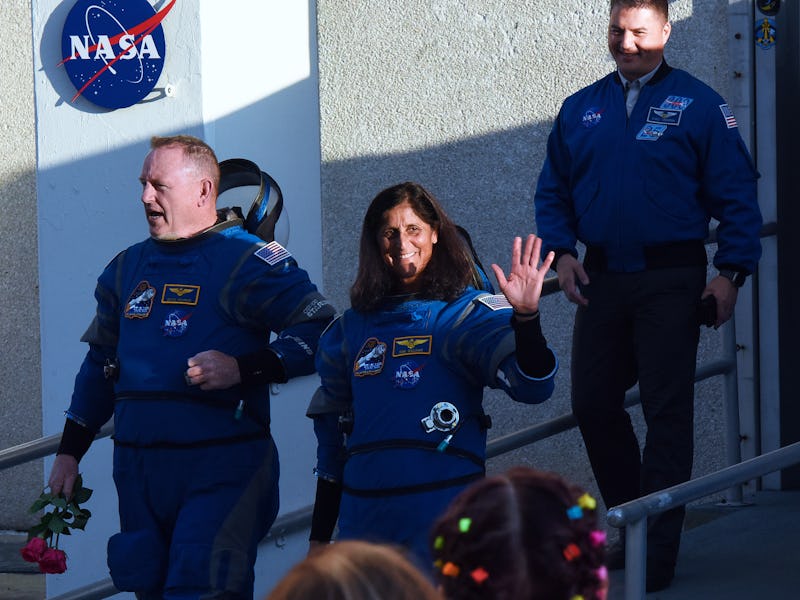What Actually Happened to the Boeing Rocket Last Night?
A malfunctioning valve is not ideal.

The Boeing Starliner spacecraft was set to launch its first crew toward the International Space Station on Monday night. But the company behind the Atlas V rocket that would have gotten them into space, United Launch Alliance (ULA), called it off. This decision, called a scrub, was made because a rocket valve was acting strange.
Things were going well at Space Launch Complex 41 at Cape Canaveral Space Force Station in Florida. But then engineers noticed a problem with a liquid oxygen, or LOX, valve on the Atlas V. “The United Launch Alliance team did a great job of assessing the data, talking through various options, and put us into a scrub condition,” Steve Stich, manager of NASA’s Commercial Crew Program, told reporters during a press conference late Monday night.
Boeing’s Starliner spacecraft sits atop a United Launch Alliance Atlas V rocket at Space Launch Complex 41 after the planned launch of NASA’s Boeing Crew Flight Test was scrubbed on May 06, 2024, in Cape Canaveral, Florida.
The decision to scrub the mission, called Crew Flight Test, follows the flight rules that had been established well ahead of Monday night. “We saw the self-regulating valve on the right side had a bit of a buzz, so it was moving in a strange behavior. The flight rules have been laid out for this flight ahead of time. With the crew at the launch pad, the proper action was to scrub,” Stitch said.
The pressure valve, located in the Atlas V rocket’s upper stage, is important for a few reasons. Liquid oxygen and liquid hydrogen are the propellants. As Stich explained, the pressures must be just right so that the tanks keep their structural integrity. They also provide the propellant to the 10 engines that will fly the Starliner capsule — and its precious human cargo — safely into space.
NASA, United Launch Alliance, and Boeing employees hold a press conference to discuss the scrubbed launch of NASA's Boeing Starliner spacecraft at the Kennedy Space Center on May 6, 2024 in Cape Canaveral, Florida. Steve Stich, manager of NASA’s Commercial Crew Program, is sitting second from the left.
Over the last decade and a half, NASA has been setting into motion a new era for American spaceflight: inviting private companies to build spacecraft capable of carrying crew into low-Earth orbit. As part of this program, SpaceX launched its first crew in 2020, and is now on its ninth crew rotation to the orbiting laboratory. But Boeing, the other company holding a commercial crew contract from NASA, has not. Monday would have been its first astronaut flight.
Teams are now reviewing the data. NASA, Boeing, and ULA are now targeting Friday, May 10, for their next launch attempt.